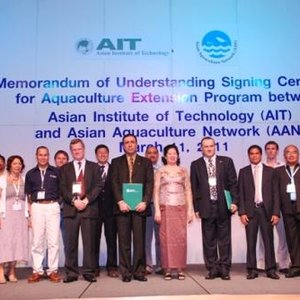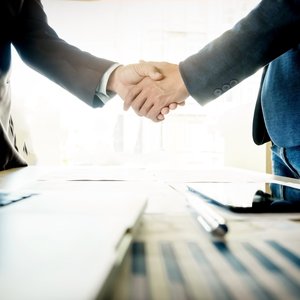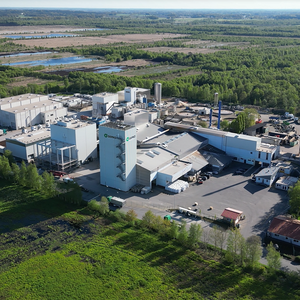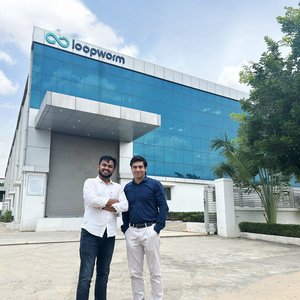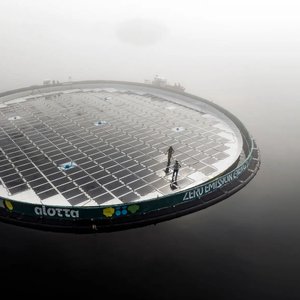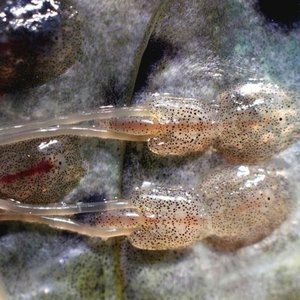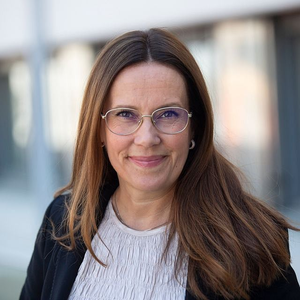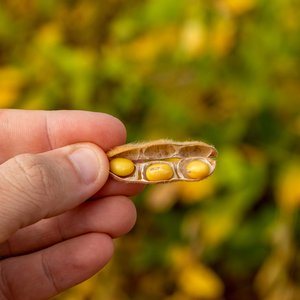Satisfied in submerged cages: Salmon happy in deeper water
It was thought to be impossible to farm salmon in submerged sea cages. But new research from the Centre for Research-based Innovation in Aquaculture Technology (CREATE) in Trondheim demonstrates otherwise. These findings may also prove valuable in combating sea lice and algae.
The salmon swim bladder requires an air supply in order to regulate the fish’s buoyancy. Until now, however, no one realised just how seldom salmon need to surface for air. This need is being quantified by researchers at CREATE, one of 14 Norwegian Centres for Research-based Innovation established four years ago with funding from the Research Council of Norway.
“We kept salmon in completely submerged cages for 17 days,” reports Arne Fredheim, Research Manager at CREATE. “The individuals swam somewhat faster than usual but they did not exhibit stress. We also tested the pain threshold for how long salmon can continuously stay below the surface. It took four months for them to become excessively stressed.”
The centre’s researchers believe that submerged cages can be used for extended periods – as long as the cages are lifted to the surface at regular intervals to give the fish access to air.
“But more research is needed to adequately determine their threshold limits,” asserts Dr Fredheim.
Using submerged cages is advantageous for avoiding storm damage and resisting invasion by algae and sea lice. There is also growing evidence that submersion may increase the effectiveness of sea lice medicines.
“Our research is part technology and part biology, and interactions are crucial. For instance, we are examining the effects of aquatic temperature, salinity and oxygen content on fish behaviour and welfare. This is fundamental knowledge on which we will base our technology development,” explains Dr Fredheim.
In the project “Cage Environment”, researchers at CREATE studied hypoxia (oxygen depletion in the aquatic environment) to ascertain critical threshold limits for fish welfare. At the same time, they gained a better understanding of how seawater flows through cage netting. Even though aquaculture sites are placed in sea areas with strong natural currents, there can be too little oxygen in the water at times – which impedes fish digestion.
“We have developed models for calculating how strong the current must be in relation to cage size and fish density,” says Senior Scientist Pål Lader, who works at CREATE. “We have also studied how fish group behaviour affects the current. They often swim in circles en masse, creating a rising spiral current.”
Becoming even more international
One of the centre’s main research partners is a research group at the University of New Hampshire in the US. This collaboration has given rise to visits by several guest researchers and exciting project activities.
“Now we are working to establish an international advisory board,” says Dr Fredheim, “and we invite international researchers to join us in this effort. We already have researchers from six countries who are associated with CREATE, which generates a very positive dynamic. There are currently 20 researchers, 11 PhD students and two post-doctoral fellows affiliated with the centre.”
Centre for Research-based Innovation in Aquaculture Technology (CREATE)
SINTEF Fisheries and Aquaculture AS is the host institution for CREATE. The centre will be funded for an eight-year period (2007-2014), with a budget of NOK 20 million per year, half of which comes from the Research Council.
CREATE’s three industrial partners are leading suppliers of aquaculture equipment:
AKVA group ASA
Egersund Net AS
Erling Haug AS
The centre’s key research partners are:
SINTEF Fisheries and Aquaculture AS
Centre for Ships and Ocean Structures at the Norwegian University of Science and Technology (NTNU)
Department of Engineering Cybernetics at NTNU
Nofima AS
Institute of Marine Research


